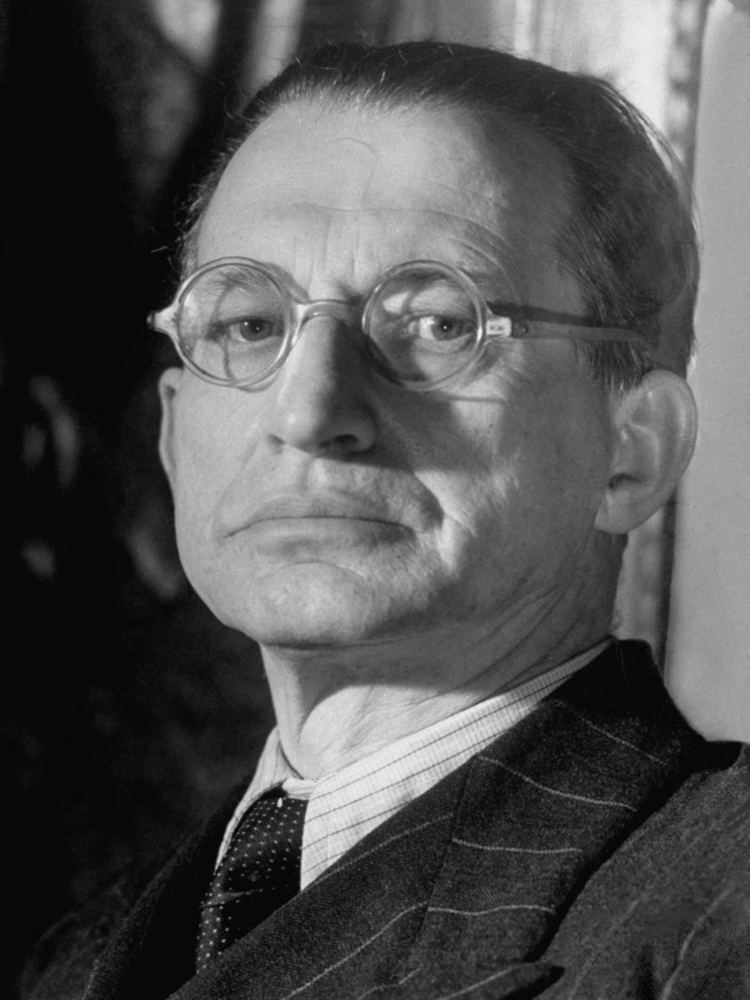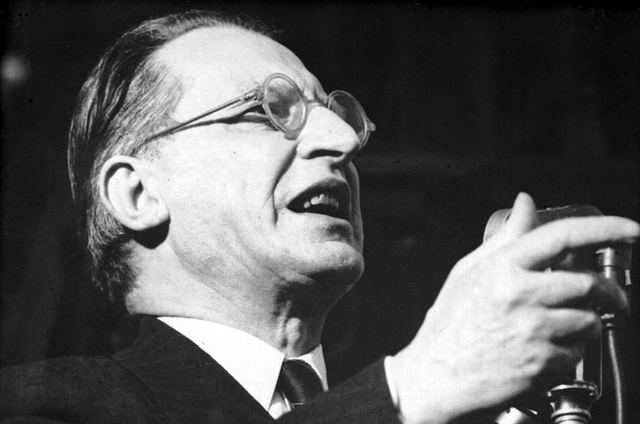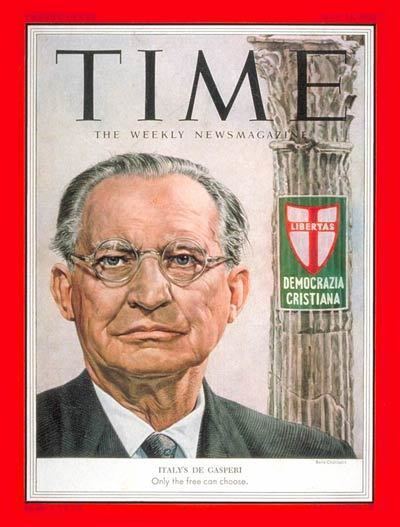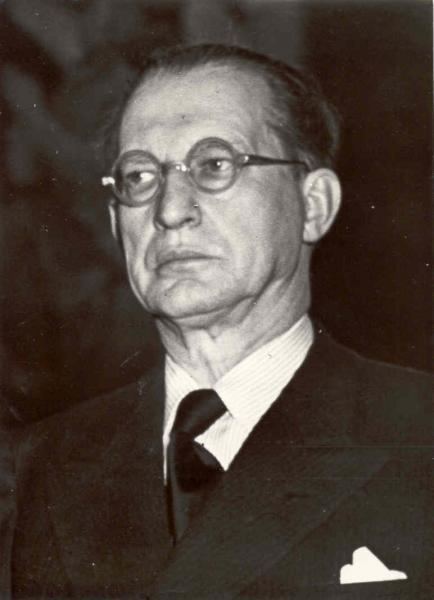Lieutenant General Prince Umberto Role Italian statesman | Name Alcide Gasperi Children Maria Romana De Gasperi | |
 | ||
Monarch Victor Emmanuel IIIUmberto II President Enrico De NicolaLuigi Einaudi Deputy Luigi EinaudiRandolfo PacciardiGiuseppe SaragatAttilio PiccioniGiovanni Porzio Spouse Francesca Romani (m. 1922–1954) Parents Maria Morandini, Amedeo De Gasperi Siblings Luigi Mario Degasperi, Augusto Degasperi, Marcellina De Gasperi Similar People Luigi Sturzo, Paul‑Henri Spaak, Winston Churchill, Leon Blum, Antonio Gramsci | ||
Founding fathers of the european union alcide de gasperi
Alcide Amedeo Francesco De Gasperi ([alˈtʃiːde de ˈɡasperi]; 3 April 1881 – 19 August 1954) was an Italian statesman and politician who founded the Christian Democracy party. From 1945 to 1953 he was the prime minister of eight successive coalition governments. His eight-year term in office remains a landmark of political longevity for a leader in modern Italian politics. A conservative Catholic, he was one of the Founding fathers of the European Union, along with the other Italian Altiero Spinelli, the French Robert Schuman and the West German Chancellor Konrad Adenauer.
Contents
- Founding fathers of the european union alcide de gasperi
- Alcide de gasperi a christian a democrat a european
- Early years
- Opposing Fascism
- Founding the Christian Democrat Party
- Prime Minister
- Social security reform
- American support
- 1948 elections
- Death and legacy
- References

Alcide de gasperi a christian a democrat a european
Early years

De Gasperi was born in Pieve Tesino in Tyrol, which at that time belonged to Austria-Hungary, now part of the Trentino in Italy. His father was a local police officer of limited financial means. From 1896 De Gasperi was active in the Social Christian movement. In 1900 he joined the Faculty of Literature and Philosophy in Vienna, where he played an important role in the inception of the Christian student movement. He was very much inspired by the Rerum novarum encyclical issued by Pope Leo XIII in 1891. In 1904 he took an active part in the student demonstrations in favour of an Italian-language university. Imprisoned with other protesters during the inauguration of the Italian juridical faculty in Innsbruck, he was released after twenty days. In 1905, De Gasperi obtained a degree in philology.

In 1905 he began to work as editor of the newspaper La Voce Cattolica which was replaced in September 1906 by Il Trentino, and after a short time he became its editor. In his newspaper he often took positions in favour of a cultural autonomy for Trentino and in defence of Italian culture in Trentino, in contrast to the Germanisation plans of the German radical nationalists in Tyrol. However, he never questioned whether or not Trentino should belong to Austria–Hungary and claimed that, in the case of a referendum, 90% of the Trentino would nevertheless choose the popular Austrian emperor Franz Joseph I of Austria over the Italian motherland.

In 1911 he became a Member of Parliament for the Popular Political Union of Trentine (Italian: Unione Politica Popolare del Trentino – UPPT) in the Austrian Reichsrat, a post he held for 6 years. He was politically neutral during World War I, which he spent in Vienna. However, he sympathized with the ultimately unsuccessful efforts of Pope Benedict XV (1914–1922) and Bl. Karl I of Austria to obtain an honourable peace and stop the war and mass warfare. When his home region was transferred to Italy in the post-war settlement, he accepted Italian citizenship.
Opposing Fascism
In 1919 he was among of the founders of the Italian People's Party (Italian: Partito Popolare Italiano – PPI), with Luigi Sturzo. He served as a deputy in the Italian Parliament from 1921 to 1924, a period marked by the rise of Fascism. He initially supported the participation of the PPI in Benito Mussolini’s first government in October 1922.
As Mussolini's hold on the Italian government grew stronger, he soon diverged with the Fascists over constitutional changes to the powers of the executive and to the election system (the Acerbo Law), and to Fascist violence against the constitutional parties, culminating in the murder of Giacomo Matteotti. The PPI split, and De Gasperi became secretary of the remaining anti-Fascist group in May 1924. In November 1926, in a climate of overt violence and intimidation by the Fascists, the PPI was dissolved.
De Gasperi was arrested in March 1927 and sentenced to four years in prison. The Vatican negotiated his release. A year and a half in prison nearly broke De Gasperi's health. After his release in July 1928, he was unemployed and in serious financial hardship, until in 1929 his ecclesiastical contacts secured him a job as a cataloguer in the Vatican Library, where he spent the next fourteen years until the collapse of Fascism in July 1943.
Founding the Christian Democrat Party
During World War II, he organized the establishment of the first (and at the time, illegal) Christian Democracy party, or Democrazia Cristiana, drawing upon the ideology of the Popular Party. In January 1943, he published "Ideas for Reconstruction" (Italian: Idee ricostruttive) which amounted to a party programme for the party. He became the first general secretary of the new party in 1944.
De Gasperi was the undisputed head of the Christian Democrats, the party that dominated Parliament for the next decades. Although his control of the DC appeared almost complete, he had to carefully balance different factions and interests, especially with regards to relations with the Vatican, social reform, and foreign policy.
Prime Minister
From 1945 to 1953, he was the prime minister of eight successive Christian Democratic governments. His eight-year rule remains a landmark of political longevity for one leader in modern Italian politics. During his successive governments, Italy became a Republic (1946), signed a Peace Treaty with the Allies (1947), joined the North Atlantic Treaty Organization (NATO) in 1949 and became an ally of the United States, which helped to revive the Italian economy through the Marshall Plan. During that time, Italy became a member of the European Coal and Steel Community (ECSC), which evolved into the European Union (EU).
After the liberation of Rome in June 1944, he served as minister without portfolio and then as Foreign Minister. In December 1945, he became Prime Minister for the first time, leading a coalition government that included the Italian Communist Party (PCI) and Italian Socialist Party (PSI). Communist party leader Palmiro Togliatti acted as vice-premier. He tried to soften the terms of the pending Allied peace treaty with Italy and secured financial and economic aid through the European Recovery Program (Marshal Plan) – which was opposed by the Communists.
In June 1946 Italy held the Constitutional Referendum to decide whether Italy would remain a monarchy or become a republic. Republicans won with 54% of the vote. Elections were also held at the same time for the Constituent Assembly. As chief of the Italian delegation at the World War II peace conference in Paris, De Gasperi obtained concessions from the Allies that guaranteed Italian sovereignty. Under the Treaty of Peace with Italy, 1947, the eastern border area was lost to Yugoslavia and the free territory of Trieste was divided between the two states.
One his most striking achievements in foreign policy was the Gruber-De Gasperi Agreement with Austria in September 1946, that established his home region, southern Tirol, as an autonomous region.
Social security reform
In domestic policy, a number of social security reforms were carried out by various ministers of De Gasperi's cabinets in the areas of rents and popular housing, unemployment insurance and pensions.
American support
De Gasperi enjoyed considerable support in the US, where he was considered able to oppose the rising tide of Communism – in particular the PCI, which was the biggest communist party in a Western European democracy. In January 1947 he visited the US. The chief goals of the trip were to soften the terms of the pending peace treaty with Italy, and to obtain immediate economic assistance. His ten-day tour, engineered by media mogul Henry Luce – the owner of Time magazine – and his wife, Clare Boothe Luce - the future ambassador to Rome - was viewed as a media "triumph," prompting positive comments of a wide section of the American press.
During his meetings in the US, he managed to secure a financially modest but politically significant US$100 million Eximbank loan to Italy. According to De Gasperi, public opinion would view the loan as a vote of confidence in the Italian Government and strengthen his position versus the Communist Party in the context of the emerging Cold War. The positive results strengthened De Gasperi’s reputation in Italy. He also came back with useful information on the incipient change in American foreign policy that would lead to the Cold War and in Italy, the break with the Communists and left-wing Socialists and their removal from the government in the May 1947 crisis.
1948 elections
The general elections in April 1948 were heavily influenced by the cold-war confrontation between the Soviet Union and the United States. After the Soviet-inspired February 1948 communist coup in Czechoslovakia, the US became alarmed about Soviet intentions and feared that, if the leftist coalition were to win the elections, the Soviet-funded Italian Communist Party (PCI) would draw Italy into the Soviet Union's sphere of influence.
The election campaign remains unmatched in verbal aggression and fanaticism in Italy's history on both sides. The Catholic Church in Italy worked hard to encourage people to vote against communist candidates. The Christian Democratic propaganda became famous in claiming that in Communist countries "children sent parents to jail", "children were owned by the state", "people ate their own children", and claiming disaster would strike Italy if the left were to take power.
In the US, a campaign was launched to prevent a victory of the Communist-dominated Popular Democratic Front (FDP – Italian: Fronte Democratico Popolare). Italian-Americans were encouraged to write letters to their relatives in Italy. The popular Italian-American singer Frank Sinatra made a Voice of America radio broadcast. The Central Intelligence Agency (CIA) funneled "black bag" contributions to anti-communist candidates with the approval of the National Security Council and President Truman. Joseph P. Kennedy and Claire Booth Luce helped to raise US$2 million for the Christian Democrat Party. Time magazine backed the campaign and featured De Gasperi on its 19 April 1948 issue’s cover and in its lead story. (He would appear on a Time cover again on 25 May 1953, during the campaign for that year's election, with an extensive biography.)
The Christian Democrats won a resounding victory with 48.5% of the vote (their best result ever) and strong majorities in both the Chamber of Deputies and Senate. The Communists received only half of the votes they had in 1946. Although De Gasperi could have formed an exclusively DC government, he opted instead to form a new centrist coalition. He ruled for five more years, helming four additional coalitions. "De Gasperi’s policy is patience," according to the foreign news correspondent for the New York Times, Anne McCormick. "He seems to be feeling his way among the explosive problems he has to deal with, but perhaps this wary mine-detecting method is the stabilizing force that holds the country in balance."
Death and legacy
In 1952, the party overwhelmingly endorsed his authority over the government and over the party. However, it was also the start of his decline. He came under increasing criticism from the emerging left wing in the party. Their main accusations were that he was too cautious in social and economic reform, that he stifled debate, and that he subordinated the party to the interests of government.
When the Christian Democrats did not gain a majority in the elections of 1953, despite the disruptive effect of the approval of a much discussed electoral law, De Gasperi was unable to establish a workable government and was forced to resign as Prime Minister. The following year he also had to give up the leadership of the party.
Two months later, on 19 August 1954, he died in Sella di Valsugana, in his beloved Trentino. It is said that he had to be given a State funeral as he had died with almost no means of his own - a jaw-dropping fact in a country where, even then, politicians were expected to do well for themselves. He is buried in the Basilica di San Lorenzo fuori le Mura, a basilica in Rome. The process for his beatification was opened in 1993.
"De Gasperi was against exacerbating conflict," according to his former secretary and former Prime Minister Giulio Andreotti. "He taught us to search for compromise, to mediate."
He is considered to be one of the Founding fathers of the European Union. From the very beginning of European integration, De Gasperi, Robert Schuman and Konrad Adenauer met regularly. He helped to organize the Council of Europe and supported the Schuman Declaration, which in 1951 led to the foundation of the European Coal and Steel Community (ECSC) – a forerunner in the process of European integration. He was named president of the Community in 1954, and although the project eventually failed, De Gasperi helped to develop the idea of the common European defence policy. In 1952 he received the Karlspreis (International Charlemagne Prize of the City of Aachen), an award by the German city of Aachen to people who contributed to the European idea and European peace. The 1954–1955 academic year at the College of Europe was named in his honour.
